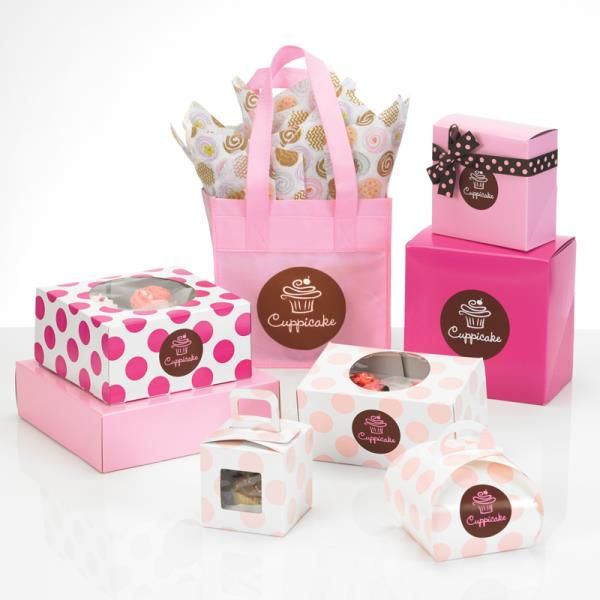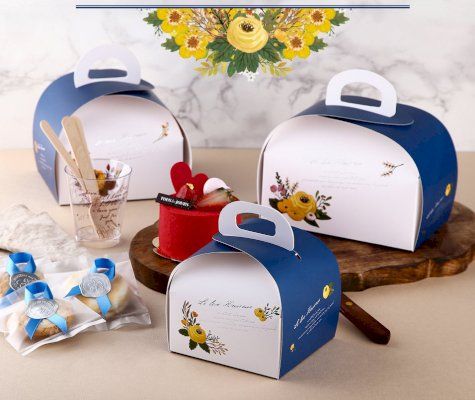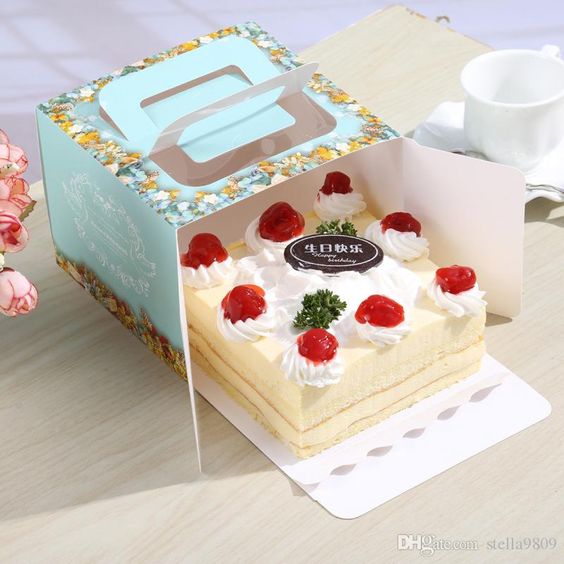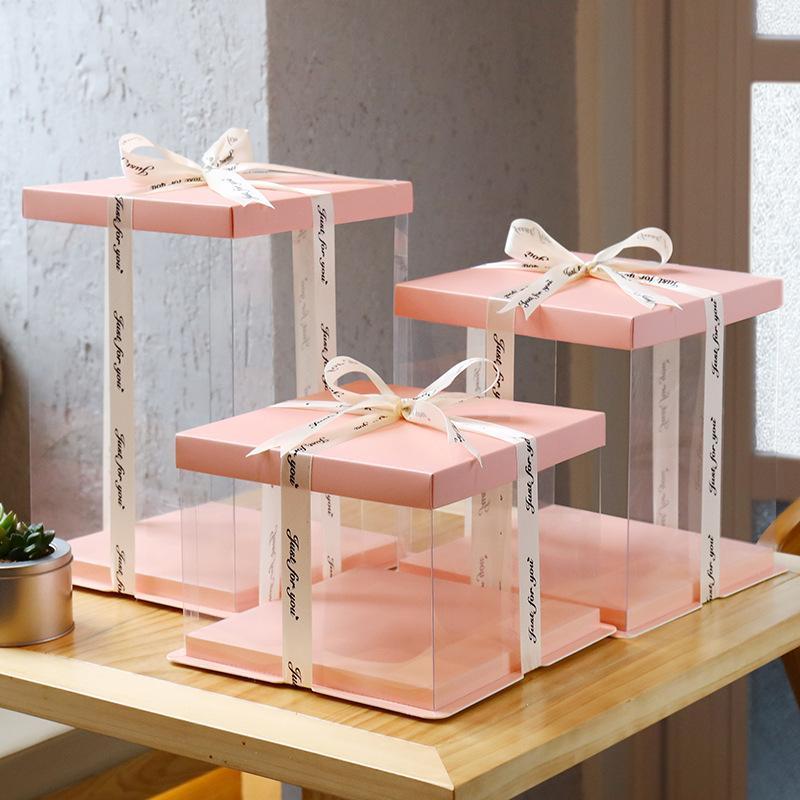Pallet packaging method
A pallet is a container device used to stack goods in a certain form and can be loaded, unloaded and transported. Pallet packaging is a collective packaging method that combines several packages or goods into an independent handling unit in a certain way. It is suitable for mechanized loading and unloading transportation operations, facilitates modern warehousing management, and can greatly improve the loading and unloading and transportation efficiency of goods. Warehousing management level.
1. Pallet packaging process of custom cupcake packaging uk
(1) Pallet packaging and its characteristics The advantages of pallet packaging are good overall performance, smooth and stable stacking, which can avoid the phenomenon of packages falling into boxes during storage, loading, unloading, transportation and other circulation processes. It is suitable for loading, unloading and transportation of large machinery. Compared with relying on manpower and small machinery to load and unload small packages, its work efficiency can be greatly improved, and it can greatly reduce the possibility of collision, fall, dumping and rough handling of goods during storage, loading and unloading, transportation and other circulation processes, ensuring Security of cargo turnover. However, pallet packaging increases the cost of pallet production and maintenance, and requires the purchase of corresponding handling machinery. Relevant statistics show that using pallet custom cupcake packaging uk instead of original packaging can significantly reduce circulation costs, including 45% reduction for home appliances, 60% reduction for paper products, 55% reduction for groceries, and 15% reduction for flat glass and refractory bricks.
(2) Pallet stacking methods There are generally four pallet stacking methods, namely simple overlapping type, forward and reverse staggered type, crisscross type and rotating staggered type, as shown in Figure 7-18. Different stacking methods have their own advantages and disadvantages, which should be selected according to the specific situation.
The main structural forms of container bags include cylindrical container bags, square container bags, conical container bags, sling-type container bags, rope-type container bags and folding box-shaped container bags. It has a loading port but no unloading port. It is sealed with a tie belt. It is easy to load and unload. It is also equipped with a sling to facilitate loading. Finally, it can be lifted with a hook, which is easy to operate. This kind of container bag has good sealing performance, good strength, not easy to break, low cost, and can be used multiple times. Empty container bags are lightweight and small, taking up very little space when recycled.
The bag body of the square container bag is a rectangular parallelepiped, and the rest of the bag is basically the same as the round simple container bag. The height of the square container bag with the same capacity can be reduced by about 20% compared with the cylindrical container bag, which improves the stacking stability. , the materials used in making bags are relatively large and are usually only used once. The conical container bag can improve the self-standing stability of the container bag. The main part is a cone with a small top and a large bottom. This kind of container bag is just like an open bag with a handle. It shares the same opening for loading and unloading. It has a small load capacity and is suitable for one-time use. Commonly used container bags include rubber canvas bags, polyvinyl chloride canvas bags and woven container bags.
The container net is also a flexible container that can contain 1 to 5 tons of small bagged products, such as grain, local products, fruits, vegetables, light daily necessities, sports equipment, etc. The materials usually require a certain fixed shape. The container net is light in weight, low in cost, takes up less space during transportation and recycling, and is very convenient to use. Commonly used container nets include disk-type container nets and box-type container nets.
Commonly used strapping materials include steel wire, steel straps, polyester, nylon, polyethylene, polypropylene, polyvinyl chloride and other plastic strapping straps and reinforced strapping straps. Steel wire is mostly used to bundle rigid objects such as metal profiles, pipes, bricks, wooden boxes, etc. When bundling wooden boxes, they will be embedded in the edges and corners of the wooden boxes. Steel straps are the type of strapping with the highest tensile strength. They have a small expansion rate and are basically not affected by factors such as sunlight and temperature. They have excellent tension retention capabilities and can withstand the tension of high-strength compressed goods, but they are prone to rust. Polycool belts have high tensile strength and impact resistance, good elastic recovery properties and tension retention capabilities, good chemical resistance, and good long-term storage. They can replace steel belts for packaging heavy items. Nylon straps are elastic, strong, have good wear resistance, bending resistance, water resistance, chemical resistance, and are light in weight. They are mainly used for bundling and packaging of heavy items, pallets, etc. Polyethylene straps are excellent strapping materials for handicraft operations. They have good water resistance and are suitable for strapping agricultural products with high moisture content. They can maintain a reliable and stable shape, are stable in storage, and are easy to use. Polypropylene straps are lightweight, soft, strong and water-resistant
The quality of custom cupcake packaging uk directly affects the safety of packaged products in the circulation process. Reasonable pallet packaging can improve packaging quality and safety, speed up logistics, and reduce transportation and packaging costs.
There are two design methods for pallet packaging: "inside-out" and "outside-in".
(1) The "inside-out" design method is to design the inner packaging, outer packaging and pallet in sequence according to the structural size of the product. The product is packaged into small packages sequentially from the production workshop, and then according to multiple small packages or larger sizes Select packaging boxes based on individual packaging, then assemble the selected packaging boxes on pallets, and then transport them to users. According to the size of the outer packaging, the stacking method on the pallet can be determined. Since there are many ways to stack corrugated cartons of a certain size on the pallet plane, it is necessary to compare various methods and choose the optimal solution.
The process of pasting a label on a fixed surface, article or package. Label bags are used to indicate the name, label, or other contents of the contents. Labels can also be used to beautify or protect the contents. The mechanical equipment that has completed labeling is generally called a labeling machine.
The range and types of labels used in custom cupcake packaging uk are increasingly expanding, and the materials used include cardboard, composite materials, foil, paper, plastics, fiber products and synthetic materials. Commonly used labels can be divided into three major categories. The first category is adhesive-free and the base material is uncoated paper and coated paper; the second category is self-adhesive, including pressure-sensitive adhesive and heat-sensitive adhesive; the third category is Runyuan type can be divided into ordinary glue type and particulate glue type.
Their characteristics and pasting methods are:
(1) Non-adhesive labels Ordinary paper labels without adhesives are affixed with hydrosol and are still widely used. Most of the paper is single-sided coated paper, and a considerable amount of uncoated paper is also used. This kind of label is used for large-volume items such as beer drinks, wine and canned food.
by
(2) Pressure-sensitive self-adhesive labels (also called self-adhesive labels) are coated with pressure-sensitive adhesive on the back and then adhered to release paper coated with silicone. When using, remove the label from the release paper and stick it on the product. Pressure-sensitive labels are available individually or adhered to rolls of release paper. Pressure-sensitive labels can also be divided into two types: permanent and removable. The permanent adhesive can stick the label in a certain position for a long time. If you try to remove it, it will damage the label or damage the surface of the product: the removable adhesive can remove the label after a certain period of time without damaging the surface of the product.
(3) Thermal self-adhesive labels. There are two types of labels: immediate type and delayed type. The former will stick to the surface of the object after applying a certain amount of heat and pressure, and is suitable for pasting small flat or convex objects; the latter changes to a pressure-sensitive type after being heated, without directly heating the object, and is suitable for food and other products.
(4) Wet type label This type of label is an adhesive label that uses two kinds of adhesives, namely ordinary glue and micro-particle glue. The former applies a layer of insoluble adhesive film on the reverse side of the paper base material, while the latter applies the adhesive to the base material in the form of tiny particles. This avoids the curling problem that often occurs with ordinary adhesive paper, and its processing efficiency and reliability Higher sex.
Labeling process and equipment
The label of the product must be affixed to a specific correct position. Not only must it be firmly affixed, but it must also be fixed in the starting position without moving during the effective life of the product or container, and maintain its good appearance. Additionally, labels should be easy to remove after the container is recycled.
The labeling process should be compatible with the productivity of other processes on the custom cupcake packaging uk production line and should not cause production line shutdowns. Simple labeling equipment uses a gun-type device to apply labels to products or containers. Semi-automatic or fully automatic labeling equipment is suitable for special types of labels, such as wet glue, pressure-sensitive or heat-sensitive labels.
Commonly used labeling equipment include the following types:
Wet glue labeling is the cheapest labeling method. The equipment includes simple semi-automatic machines and high-speed (600 pieces/min) fully automatic machines. Its structure includes container supply (linear or rotary type), label transmission (vacuum transmission) (or stick-and-pick-up transfer) and gluing methods (full-width gluing or partial gluing), although there are differences, they all have the following functions: D. Transfer one label at a time from the label storage warehouse; (2 use Adhesive coated label: 3. Transfer the adhesive label to the required position of the product to be attached; @ Fix the product in the correct position; 5. Apply pressure to make the label firmly adhere to the product; @ Remove the labeled product
There are 5 main types of adhesives used for wet glue labels, namely dextrin type, casein type, starch type, synthetic resin emulsion and hot melt adhesive. Except for hot melt adhesive, all of them are water-soluble.
Figure 6-9 is a mechanical labeling machine with vacuum label taking. The vacuum nozzle 8 on the label taking drum 7 sucks the label 6 out of the label box 5. The label guide 9 cooperates with the back silver 4 to push the label. The labeling roller 10 is sent to the glue coating silver 3 for coating, and then is sent to the labeling position by the labeling claw 12 to label the container 13 fed by the feeding screw 15, and then the pressure belt 11 and the pressure pad 14 will The labels are pressed and sent off the production line. The machine is characterized by high-speed labeling and the use of various adhesives.
Pressure-sensitive labeling machine The pressure-sensitive labels are pre-coated with adhesive. In order to avoid sticking to other items, the adhesive surface has a backing paper of anti-adhesive material. Therefore, all pressure-sensitive labeling machines have a common feature, that is, they must There is a device that peels the label from the liner, usually by unrolling a roll of die-cut labels and pulling them around a peeling plate under tension. As the liner flexes around an acute angle, the leading edge of the label is peeled off. Once the labels have been removed from the backing paper, they can be fed forward using different methods and pressed into the correct position on the container.
For example, the container is transferred under the labeling roller, and the label is transferred to the container by the light pressure generated between the labeling roller and the pressure pad, Or the labels are adsorbed on a vacuum chamber or vacuum drum, and they are affixed when the container reaches the correct position; the labels can also be blown against the container by the disappearance of the vacuum and the application of air pressure,
Post time: Nov-20-2023





